Software Development, Finance and Economics
We’ve been doing Software Development and Architecture work for a while at Snowpal, and currently have several B2B and B2C products in production. In this podcast, we’ll share our experiences on a regular basis to help you & your teams build great software. The topics covered in this podcast will include Product Management, Project Management, Architecture, Development, Deployment, Security, Release Management, Sales, Marketing, Advertising, and just about everything else an ambitious, fast growing startup based out of the US is likely to be involved in. So, join us. Let’s become better!
Episodes
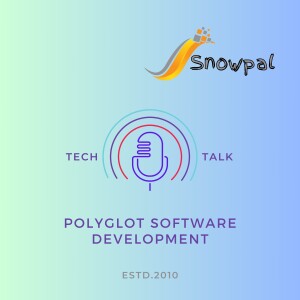
Thursday Jan 04, 2024
(Part 1/2) Coaching and Self Development (feat. Dan Tudorache)
Thursday Jan 04, 2024
Thursday Jan 04, 2024
In this podcast episode, Dan Tudorake discusses game-based learning and its implementation in the tech industry. He shares insights on how game-based learning can be applied to software teams and how it can benefit different roles within an organization. Dan also explains how his coaching and gaming sessions are structured and the typical audience composition.
Takeaways
Game-based learning is an effective approach to training and development in the tech industry.
Game-based learning can be implemented to improve collaboration and problem-solving skills within software teams.
Training sessions should be tailored to the specific needs and interests of different roles within an organization.
Gaming sessions can be organized for groups of various sizes and should include participants from different departments and roles.
Dan Tudorache's Details
LinkedIn Page: https://www.linkedin.com/in/dantudorache/
Vibe IT Up Podcast: https://www.linkedin.com/company/vibe-it-up/
EmpacITy company website: https://www.empacity.ro/
Personal webpage: https://www.dantudorache.com/
Tech Career Accelerator Program: https://www.empacity.ro/tech-career-accelerator-program/
Snowpal Products:
Backends as Services on AWS Marketplace
Mobile Apps on App Store and Play Store
Web App
Education Platform for Learners and Course Creators
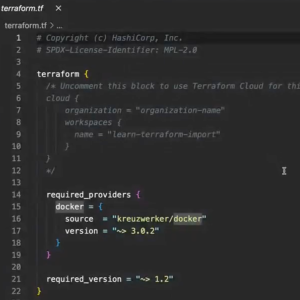
Wednesday Jan 03, 2024
(Part 2/N) Terraform: Import Existing Resource
Wednesday Jan 03, 2024
Wednesday Jan 03, 2024
In this episode of the Terraform series, we continued from where we left off in the previous podcast. We created a Docker container, cloned the example repository, and initialized Terraform. We generated configuration using Terraform plan and imported a resource while modifying the configuration. We pruned the generated configuration and applied changes, handling destructive changes. We also troubleshooted and fixed errors along the way. Overall, we made progress in understanding Terraform and managing Docker containers using Terraform. In this second podcast of the Terraform series, Krish continues exploring the Terraform documentation and learning as he goes. He demonstrates how to modify the Terraform configuration by replacing placeholder values and making necessary changes to the config files. Krish also shares the commands he used, including Docker run, Docker PS, Terraform plan, Terraform apply, and Terraform show. He concludes the podcast by summarizing the progress made and inviting viewers to check out the next episode.
Takeaways
Terraform allows you to manage infrastructure using a common workflow
Importing resources into Terraform requires defining an import block and generating configuration
Destructive changes should be carefully managed and tested
Troubleshooting errors in Terraform requires understanding the configuration and resource dependencies Modifying the Terraform configuration involves replacing placeholder values and making necessary changes to the config files.
Commands like Docker run, Docker PS, Terraform plan, Terraform apply, and Terraform show are useful in the Terraform workflow.
The Snowpal platform offers APIs and SaaS products that can be used to power back-end systems and accelerate development processes.
Snowpal provides flexible options for using their products, including pay-per-use, monthly plans, and commercial licenses.
Chapters
00:00 Introduction and Recap
02:01 Creating a Docker Container
05:19 Cloning the Example Repository
08:16 Initializing Terraform and Generating Configuration
10:04 Understanding Main.tf and Terraform.tf
11:46 Generating Configuration with Terraform Plan
15:50 Importing a Resource and Modifying Configuration
18:21 Pruning the Generated Configuration
20:50 Applying Changes and Handling Destructive Changes
27:31 Troubleshooting and Fixing Errors
36:44 Recap and Conclusion
50:29 Modifying the Terraform Configuration
52:28 Summary and Next Steps
53:26 Using Snowpal APIs and SaaS Products
Snowpal Products:
Backends as Services on AWS Marketplace
Mobile Apps on App Store and Play Store
Web App
Education Platform for Learners and Course Creators
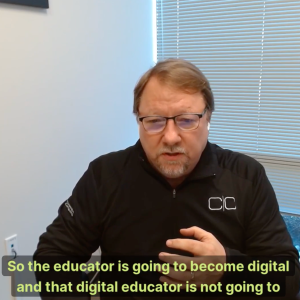
Friday Dec 29, 2023
Friday Dec 29, 2023
The conversation explores the transformation of education and the future of learning. It discusses the role of research and research communities in shaping education. The importance of a well-rounded education and the need to adapt to market needs are highlighted. The conversation also delves into how real-time education will change and the potential disruption of the traditional education system. The role of humans in future education is examined, along with the vision for a more personalized and automated learning experience. An anecdote is shared to illustrate the challenges in traditional education. In this conversation, Krish and David discuss the impact of automation and AI on education. They explore the challenges and benefits of personalization in learning, as well as the potential loss of the human element. They also discuss the importance of building trust with digital entities and the future of education in a hyper-personalized world. They touch on the balance between automation and human interaction, using the example of playing chess. Ultimately, they emphasize the need to embrace change and make choices that prioritize the things that truly matter.
Takeaways
Education is undergoing a transformation, driven by advancements in technology and the need to adapt to market demands.
Research and research communities play a crucial role in shaping the future of education.
Real-time education and personalized learning experiences will become the norm.
The traditional education system is likely to be disrupted, leading to new models and approaches.
The role of humans in education will evolve, with digital technologies and automation playing a significant role. Automation and AI have the potential to dramatically change education, offering personalized learning experiences.
While personalization can enhance learning, it may also lead to a loss of the human element in education.Building trust with digital entities is crucial in a hyper-personalized world.
The future of education will involve a balance between automation and human interaction.
Chapters
00:00 Introduction and Setting the Stage00:53 Transformation of Education: Research and Research Communities06:31 Well-Rounded Education and Adapting to Market Needs11:25 Interacting with Real-Time Education19:47 Disruption of Traditional Education System30:49 The Role of Humans in Future Education41:10 Research, Training, and Execution in Education46:07 The Vision for Future Education47:31 Anecdote: Challenges in Traditional Education48:01 Introduction to Advanced Calculus49:26 The Challenge of Personalization50:26 The Potential Lack of Human Element51:31 Building Trust with Digital Entities52:29 Interacting with Teachers in a Hyper-Personalized World53:52 The Future of Education and Personalization55:25 The Balance Between Automation and Human Interaction56:52 The Example of Playing Chess57:22 The Importance of Human Personalization01:03:17 Finding a Balance in a Changing World01:06:00 Embracing Change and Making Choices01:10:42 Prioritizing the Things That Matter
Snowpal Products:
Backends as Services on AWS Marketplace
Mobile Apps on App Store and Play Store
Web App
Education Platform for Learners and Course Creators

Thursday Dec 28, 2023
(Part 1/N) Terraform: Fundamentals, Set up, Configuration, Providers, Resources
Thursday Dec 28, 2023
Thursday Dec 28, 2023
In this podcast episode, Krish explores the topics of platform engineering and Terraform. He starts by discussing Humanitech, a tool that streamlines platform engineering processes. Krish then dives into Terraform, an infrastructure as code tool, and demonstrates how to get started with it. He covers the basics of Terraform configuration, provisioning and destroying infrastructure, using variables, and working with the AWS provider. Krish also explores the resources available in Terraform and compares it to AWS SAM, another infrastructure as code framework. In this podcast episode, the host continues reviewing the build infrastructure section of Terraform. They explore resource blocks and the unique ID for resources. The host emphasizes a pragmatic approach to learning and highlights the benefits of hands-on experience. They also provide a recap of the progress made so far, including modifying the Terraform file and working with variables. The episode concludes with a promotion of the host's APIs and a call to action for listeners to try them out.
Takeaways
Humanitech is a tool that helps streamline platform engineering processes.
Terraform is an infrastructure as code tool that allows you to define, provision, and manage infrastructure resources.
Terraform configuration consists of providers, resources, and variables.
You can use Terraform to provision and destroy infrastructure, and manage resources across different cloud providers.
AWS API Gateway is a service that allows you to create, deploy, and manage APIs. Resource blocks in Terraform consist of a resource type and name, which form a unique ID for the resource.
Taking a pragmatic approach to learning, such as hands-on experience, can be more effective than solely relying on documentation and theory.
Using variables in Terraform files allows for more flexibility and avoids hard coding values.
Promoting APIs and encouraging listeners to try them out can help streamline backend system development.
Chapters
00:00 Introduction and Background02:18 Exploring Humanitech06:07 Introduction to Terraform07:06 Getting Started with Terraform13:37 Understanding Terraform Configuration19:05 Provisioning and Destroying Infrastructure23:16 Using Variables in Terraform28:08 Working with AWS Provider38:42 Exploring Terraform Providers and Resources45:46 Understanding AWS API Gateway49:30 Comparing Terraform and AWS SAM51:43 Reviewing the Build Infrastructure Section53:05 Taking a Pragmatic Approach to Learning54:32 Recap of Progress So Far55:02 Using Variables in Terraform Files56:03 Ending the Podcast and Promoting APIs
Snowpal Products:
Backends as Services on AWS Marketplace
Mobile Apps on App Store and Play Store
Web App
Education Platform for Learners and Course Creators
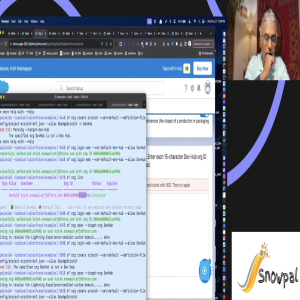
Thursday Dec 28, 2023
Thursday Dec 28, 2023
In this podcast episode, Krish explores the Salesforce platform and its various features. He starts by reviewing the previous episodes in the Salesforce series and provides an overview of the Anypoint platform. Krish then dives into the Salesforce dashboard and explores the sales solutions available. He also examines the configuration settings and introduces the concept of Lightning components and the Lightning Design System. Krish demonstrates how to use the Lightning Web Components Studio and explores the differences between Aura components and Lightning Web Components. He also shares his approach to learning by doing and troubleshooting component issues. Finally, Krish compares Salesforce components to React components. In this part of the conversation, the host explores Salesforce Lightning Components and the process of setting up the development environment. They discuss the Salesforce Lightning Experience and the creation of a Lightning Web Component. The host also delves into the usage of Salesforce CLI for deployment and the concept of Scratch Orgs. They explore Salesforce Dev Hubs and troubleshoot deployment issues. The conversation concludes with an overview of Salesforce Permission Sets and a summary of the topics covered. In this episode, Krish explores the Salesforce CLI and the Salesforce platform. He starts by creating a new org and then logs into it. Next, he creates a project and explores scratch orgs. Krish introduces Apex, the Salesforce-specific language, and discusses its usage. He then explores the Salesforce Lightning Experience and its features. Finally, Krish summarizes the topics covered and suggests next steps for further exploration.
Takeaways
Salesforce offers a wide range of solutions for sales, marketing, commerce, and service.
Lightning components and the Lightning Design System are key elements of the Salesforce platform.
The Lightning Web Components Studio provides a visual interface for building and testing components.
Understanding the differences between Aura components and Lightning Web Components is important for development on the Salesforce platform.
Learning by doing and troubleshooting issues is an effective way to explore and understand Salesforce components.
Salesforce Lightning Components are used to build applications on the Salesforce platform.
Setting up the development environment involves installing Salesforce CLI and configuring Scratch Orgs.
Salesforce Dev Hubs are used to manage and deploy Salesforce applications.
Permission Sets in Salesforce allow for granular control over user access and permissions. The Salesforce CLI allows developers to interact with the Salesforce platform from the command line.
Scratch orgs are temporary Salesforce environments that can be created and used for development and testing purposes.
Apex is a Salesforce-specific language used for creating custom components and functionality.
The Salesforce Lightning Experience provides a modern and intuitive user interface for Salesforce applications.
Chapters
00:00 Introduction to Salesforce Series03:23 Exploring Salesforce Dashboard04:19 Salesforce Sales Solutions06:43 Configuring Salesforce Settings09:09 Understanding Lightning Components17:17 Using Lightning Web Components Studio21:13 Exploring Lightning Design System23:12 Understanding Aura Components and Lightning Web
28:02 Learning by Doing32:13 Creating a Hello World Component36:21 Troubleshooting Component Issues45:41 Adding More Components49:53 Comparing Salesforce Components to React Components50:34 Introduction to Salesforce Lightning Components58:52 Setting Up the Development Environment01:01:26 Exploring Salesforce Lightning Experience01:04:31 Creating a Lightning Web Component01:07:12 Using Salesforce CLI for Deployment01:09:24 Working with Scratch Orgs01:12:25 Understanding Salesforce Dev Hubs01:21:16 Troubleshooting Deployment Issues01:30:18 Exploring Salesforce Permission Sets01:41:57 Summary and Next Steps01:49:23 Creating a New Org01:50:13 Logging into the New Org01:51:43 Creating a Project01:52:28 Exploring Scratch Orgs01:53:26 Reviewing Scratch Org Creation01:54:02 Introduction to Apex01:55:13 Exploring Salesforce Lightning Experience01:56:57 Using Scratch Orgs for Projects01:57:59 Summary and Next Steps
Snowpal Products:
Backends as Services on AWS Marketplace
Mobile Apps on App Store and Play Store
Web App
Education Platform for Learners and Course Creators
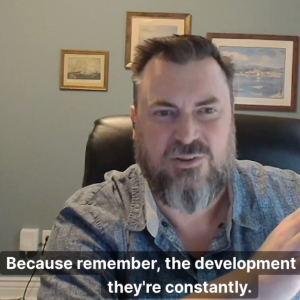
Wednesday Dec 27, 2023
Fundamentals of Platform Engineering (feat. James Schorr)
Wednesday Dec 27, 2023
Wednesday Dec 27, 2023
In this conversation, James Schorr, a senior director in the cloud platform area, discusses platform engineering and its impact on developers. Platform engineering is the next evolution of DevOps, aiming to provide a consistent and easy-to-use platform for developers. It simplifies the developer experience by reducing the cognitive load and allowing developers to focus on writing code. The goal is to make the developer's life easier and provide a self-service platform. The platform engineering team aims to meet the needs of developers using different programming languages and frameworks. The skills needed for integrating with platform engineering include understanding CI/CD pipelines and configuration management. In this conversation, James Schorr and Krish discuss various aspects of platform engineering. They cover topics such as understanding Kubernetes and serverless, concerns about learning and vendor lock-in, balancing ease of use and continuous learning, the job market for platform engineering, and the suitability of platform engineering for different organizations.
Takeaways
Platform engineering is the next evolution of DevOps, providing a consistent and easy-to-use platform for developers.
The goal of platform engineering is to simplify the developer experience and reduce the cognitive load on developers.
Platform engineering aims to provide a self-service platform, allowing developers to focus on writing code.
Developers should have the freedom to choose their preferred programming languages and frameworks, while the platform engineering team focuses on providing the necessary tools and support.
Skills needed for integrating with platform engineering include understanding CI/CD pipelines and configuration management. It is important to understand the underlying concepts of Kubernetes and serverless, as the specific tools and implementations may vary between companies.
Learning and adapting to different platform engineering tools and approaches is necessary, but it can be a concern for consultants or individuals who may need to switch organizations.
Continuous learning is essential for personal growth and should not be solely dependent on the organization or platform engineering team.
Platform engineering skills, along with security and integration expertise, are in high demand in the job market.
Platform engineering is more suitable for medium to large-sized organizations that can dedicate resources to manage and maintain the platform.
Chapters
00:00 Introduction and Overview00:45 What is Platform Engineering?03:00 Transition from DevOps to Platform Engineering06:16 Impact on Developer's Daily Life08:10 Simplifying Developer Experience10:35 Supporting Different Programming Languages13:05 Time Savings for Developers14:31 Quantifying Time Savings17:07 Rolling Back Deployments18:05 Self-Service and Developer Empowerment21:13 Interacting with the Platform24:09 Supporting Multiple Programming Languages25:20 Different Team Configurations28:39 Skills Needed for Platform Engineering35:26 Different Developer Personas39:00 Skills for Integrating with Platform Engineering45:25 Understanding Kubernetes and Serverless46:11 Concerns about Learning and Vendor Lock-In49:56 Balancing Ease of Use and Continuous Learning53:00 Job Market for Platform Engineering57:31 Suitability of Platform Engineering for Different Organizations
Snowpal Products:
Backends as Services on AWS Marketplace
Mobile Apps on App Store and Play Store
Web App
Education Platform for Learners and Course Creators

Sunday Dec 24, 2023
(Part 2/2) Impact of Social Media on Mental Health (feat. Vidhi Vohra)
Sunday Dec 24, 2023
Sunday Dec 24, 2023
In this conversation, Krish and Vidhi discuss the impact of social media on mental health, specifically focusing on the role of comparison. They explore how comparison can steal joy and peace of mind, and how social media exacerbates this issue by constantly triggering comparison. They emphasize the importance of not letting social media change one's opinion about their own life and not allowing comparisons to affect mental well-being. They also discuss the need to express gratitude and find satisfaction in one's own achievements, as well as the importance of building a positive mindset and finding happiness in local experiences. This conversation explores the impact of social media on mental health and provides insights on how to use social media mindfully. It emphasizes the importance of setting priorities and not letting social media negatively affect mental peace and joy. The addictive nature of social media is discussed, along with the need for reflection and adjustments to ensure a healthy relationship with it. Taking breaks from social media and finding a balance between personal and professional use is highlighted. The conversation also touches on the pressure to distribute content on multiple platforms and the challenges of content creation. Ultimately, the key takeaway is to prioritize mental health and find enjoyment in content creation and consumption while avoiding comparisons and unfair judgments.
Takeaways
Comparison is the thief of joy and can negatively impact mental health.
Social media exacerbates the issue of comparison by constantly triggering it.
It is important to not let social media change one's opinion about their own life and not allow comparisons to affect mental well-being.
Expressing gratitude and finding satisfaction in one's own achievements can contribute to mental well-being.
Building a positive mindset and finding happiness in local experiences can help counter the negative effects of social media. Use social media mindfully and set priorities to avoid negative impacts on mental health.
Take breaks from social media and find a balance between personal and professional use.
Reflect on the purpose and impact of social media usage and make adjustments as necessary.
Prioritize mental health and find enjoyment in content creation and consumption while avoiding comparisons and unfair judgments.
Chapters
00:00 Introduction and Background02:11 Comparison is the Thief of Joy06:24 Comparison on Social Media08:47 Comparison with Neighbors13:00 The Role of Social Media in Comparison17:21 Finding Satisfaction in Achievements19:44 Expressing Gratitude24:28 Balancing the Pros and Cons of Social Media29:27 Building a Positive Mindset33:09 Finding Happiness in Local Experiences40:12 The Impact of Social Media on Mental Health41:02 Constantly Looking at Other People's Messages42:00 The Addictive Nature of Social Media43:22 Reflection and Adjustments44:39 Taking Breaks from Social Media46:20 The Overwhelming Amount of Content on Social Media47:37 Finding Your Own Rules for Social Media49:02 The Pressure to Distribute Content on Multiple Platforms50:00 Prioritizing Mental Health in Social Media Usage52:21 Mindful Usage of Social Media57:09 Enjoying Content Creation and Distribution59:14 The Challenges of Content Creation01:05:00 Comparisons and Unfair Judgments on Social Media01:06:45 Mindful Usage and Prioritization of Social Media
Snowpal Products:
Backends as Services on AWS Marketplace
Mobile Apps on App Store and Play Store
Web App
Education Platform for Learners and Course Creators

Sunday Dec 24, 2023
(Part 1/2) Impact of Social Media on Mental Health (feat. Vidhi Vohra)
Sunday Dec 24, 2023
Sunday Dec 24, 2023
The conversation, between Krish Palaniappan & Vidhi Vohra, explores the impact of social media on mental health. It discusses the negative effects of excessive social media usage, such as reduced interaction and increased anxiety and depression. The conversation also touches on the fear of missing out, comparison with others, and the use of filters to present an idealized version of oneself. Strategies for reducing social media usage and improving work productivity are discussed. The conversation concludes with the importance of prioritizing family and personal connections over social media.
Takeaways
Excessive social media usage can lead to reduced interaction and increased anxiety and depression.
The fear of missing out and comparison with others can contribute to negative mental health effects.
Using filters and presenting an idealized version of oneself on social media can create unrealistic expectations and feelings of insecurity.
Strategies for reducing social media usage include setting boundaries, limiting notifications, and prioritizing personal connections.
Balancing social media usage can improve work productivity and overall well-being.
Chapters
00:00 Introduction01:34 Starting the Conversation03:01 Negative Impact of Social Media06:16 Lack of Interaction09:24 Fear of Missing Out11:48 Context Switching and Productivity14:23 Comparison and Filters20:15 Impact on Different Demographics22:02 Validation and Insecurity26:07 Making Adjustments28:53 Reflecting on Personal Experience35:17 Tying it to Work Productivity36:03 Closing Comments
Snowpal Products:
Backends as Services on AWS Marketplace
Mobile Apps on App Store and Play Store
Web App
Education Platform for Learners and Course Creators
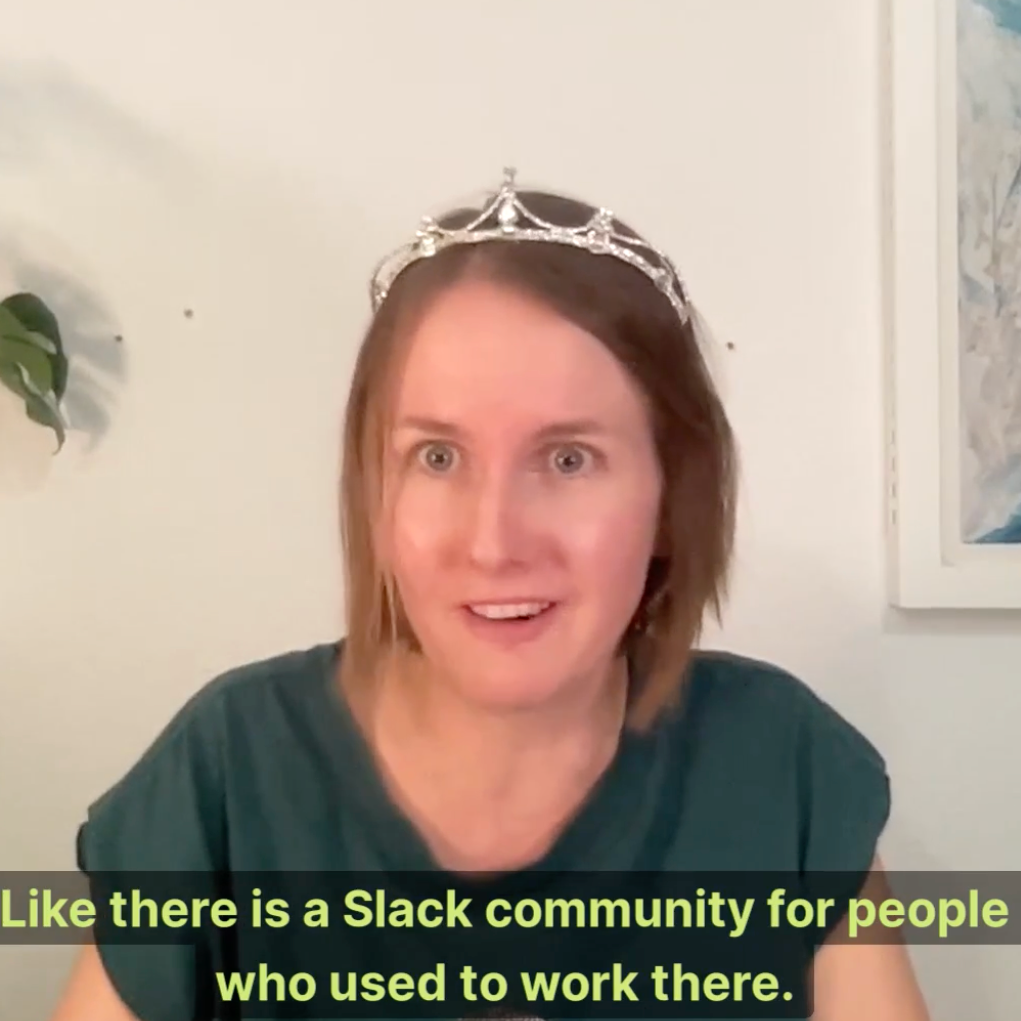
Sunday Dec 24, 2023
Sunday Dec 24, 2023
Valentina Thörner discusses the challenges and benefits of remote work in her book 'From a Distance: Strategies and Tools for Leading Remote Support Teams.' She emphasizes the importance of trust, communication, and clear expectations in remote work. Valentina also highlights the need for conscious conversations and checkpoints to ensure productivity and support for remote workers. She addresses the fear and insecurity of managers in remote work and suggests creating spaces for personal connections and sharing in remote teams. Valentina also discusses the impact of cultural differences on remote work and the need for understanding and adaptation. The conversation explores the importance of understanding cultural differences and creating awareness in remote work. It emphasizes the need to assume good intent and be aware of different frames of reference. The discussion also highlights the significance of building relationships and personal connections in remote teams. It concludes by discussing the future of work and the value of long-term relationships in a changing landscape.
Takeaways
Trust, communication, and clear expectations are crucial in remote work.
Conscious conversations and checkpoints help ensure productivity and support for remote workers.
Creating spaces for personal connections and sharing can foster a sense of belonging in remote teams.
Understanding and adapting to cultural differences is important in remote work.
Understanding cultural differences is crucial in remote work to bridge communication gaps and foster collaboration.
Creating awareness about different frames of reference helps reduce friction and assumptions in remote teams.
Building personal connections and relationships in remote work is essential for effective communication and trust.
Long-term relationships contribute to knowledge retention and enrich the work environment.
Chapters
00:00 Introduction and Book Discussion01:17 Reasons Remote Work Won't Work for Your Company02:33 Differences in Remote Work Before and After the Pandemic04:19 Supporting Remote Workers Who Lack Skills05:50 The Fear of Managers in Remote Work06:15 The Devil's Advocate: Monitoring Remote Workers08:11 The Insecurity of Managers in Remote Work09:10 The Importance of Conscious Communication in Remote Work10:18 Creating Checkpoints and Clear Expectations in Remote Work11:21 Establishing Trust and Comfort in Remote Work13:16 The Role of Trust, Communication, and Expectations in Remote Work14:34 Establishing Personal Relationships in Remote Work18:14 Cultural Differences in Remote Work20:48 Challenges of Personal Relationships in Remote Work25:19 The Limitations of Online Channels for Personal Relationships28:00 Addressing Cultural Differences in Remote Work29:36 The Complexity of Cultural Differences in Remote Work32:13 Addressing Diversity and Cultural Differences in Remote Work32:52 Understanding Cultural Differences39:33 Creating Awareness and Assumptions44:37 Building Relationships in Remote Work50:26 The Importance of Long-Term Relationships56:38 The Future of Work and Relationships
Snowpal Products:
Backends as Services on AWS Marketplace
Mobile Apps on App Store and Play Store
Web App
Education Platform for Learners and Course Creators

Sunday Dec 24, 2023
Automated Economy Series (2/N): AI in Automated Economy (feat. David Kramer)
Sunday Dec 24, 2023
Sunday Dec 24, 2023
In this conversation, Kramer discusses the role of AI in the automated economy and its impact on various industries. He explains how AI can process large amounts of data and make logical decisions, leading to advancements in automation and personalization. Kramer also explores the changing roles in different sectors and the emergence of new roles in the digital era. He highlights the importance of understanding the art of the possible and adapting to the new ways of working. Additionally, he touches on the transformation of education and the need for thought leadership in embracing AI. In this conversation, Krish and Kramer discuss the importance of human-written content and the challenges of finding it in a world filled with automated content. They also explore the value of conversational content and how Snowpals plays a role in content creation.
Takeaways
AI enables the processing of large amounts of data and logical decision-making, leading to automation and personalization.
Roles in various industries will change as AI takes over mundane tasks and humans focus on more specialized and creative roles.
The future of education will involve a shift in how knowledge is acquired and certified, with a focus on skills and real-time learning.
Understanding the art of the possible and embracing new ways of working is crucial for adapting to the digital era. Human-written content is valuable because it provides a personal connection and unique perspective.
Finding human-written content can be challenging due to the abundance of automated content.
Conversational content is valuable because it captures authentic and engaging discussions.
Snowpal helps create high-quality human-written content for businesses.
Chapters
00:00 Introduction and AI in the Automated Economy04:06 Advancements in AI and Cognitive Capability10:28 Role Mapping in the Automated Economy17:08 The Impact of AI on the Restaurant Industry27:30 The Future of Education in the AI Era42:16 The Transformation of Education45:43 Closing Thoughts on Role Definition and Ways of Working10:30 The Importance of Human-Written Content20:15 The Challenges of Finding Human-Written Content30:45 The Value of Conversational Content40:00 The Role of Snowpals in Content Creation46:45 Conclusion
#snowpal #cooperativecomputing
Cooperative Computing:
LinkedIn: David Kramer
Company Website
"How AI is Disrupting Traditional Business Models"
Snowpal Products:
Backends as Services on AWS Marketplace
Mobile Apps on App Store and Play Store
Web App
Education Platform for Learners and Course Creators







